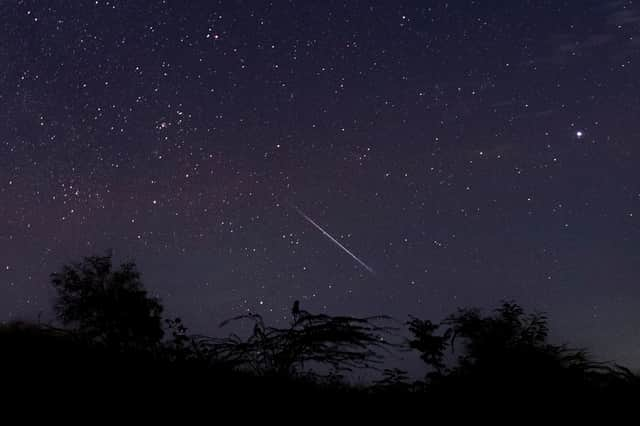Geminids meteor shower 2023: When is the peak, how to see them in the UK - and what are they?


The Geminids meteor shower is one of the most spectacular astronomical events visible from Earth. Unlike many other meteor showers that are caused by debris from comets, the Geminids originate from an asteroid called 3200 Phaethon.
Discovered in 1983, Phaethon has an unusual orbit that brings it closer to the Sun than any other named asteroid. As it hurtles through space, it sheds debris that Earth passes through in December, creating the Geminids meteor shower.
Advertisement
Hide AdAdvertisement
Hide AdWhat sets the Geminids apart is their reliability and intensity. They are known for their abundant and bright meteors, sometimes producing up to 120 per hour during their peak. The meteors are swift too, travelling at around 79,000 miles per hour.
They often leave long-lasting streaks or trails across the sky due to their high density and slower atmospheric entry speed compared to other meteor showers. Here is everything you need to know about them.
What's the best way to see the Geminids meteor shower?
Keep an eye on the weather forecast and choose a night with minimal cloud cover, as they can obviously obstruct the view and hinder the experience.
Location is key, and opting for a viewing spot away from city lights will minimise light pollution. The darker the sky, the more meteors you'll be able to see. Parks, rural areas or high vantage points away from urban centres are excellent choices.
Advertisement
Hide AdAdvertisement
Hide AdDress warmly, even if it's not too cold initially. Nights can get chilly, especially when you're stationary. Bring blankets, chairs, snacks, and hot drinks to stay comfortable during the viewing.
Be patient. Meteor showers can be unpredictable, so allow ample time for your eyes to adjust to the darkness. Minimise the use of phones and torchers to allow your eyes to adjust to the darkness for better visibility of the meteors.
The Geminids are best observed after midnight and in the pre-dawn hours when the radiant point (the spot in the sky from which the meteors appear to originate) is higher in the sky. However, some meteors may still be visible earlier in the evening.
When is the peak?
The Geminids meteor shower typically occurs annually from around December 4th to December 17th, with its peak activity usually falling around December 13th or 14th. It's during this peak that the shower tends to be at its most impressive, offering the highest number of meteors per hour. In 2023, the Geminids will peak on the evening of Thursday 14 December.
Comment Guidelines
National World encourages reader discussion on our stories. User feedback, insights and back-and-forth exchanges add a rich layer of context to reporting. Please review our Community Guidelines before commenting.
